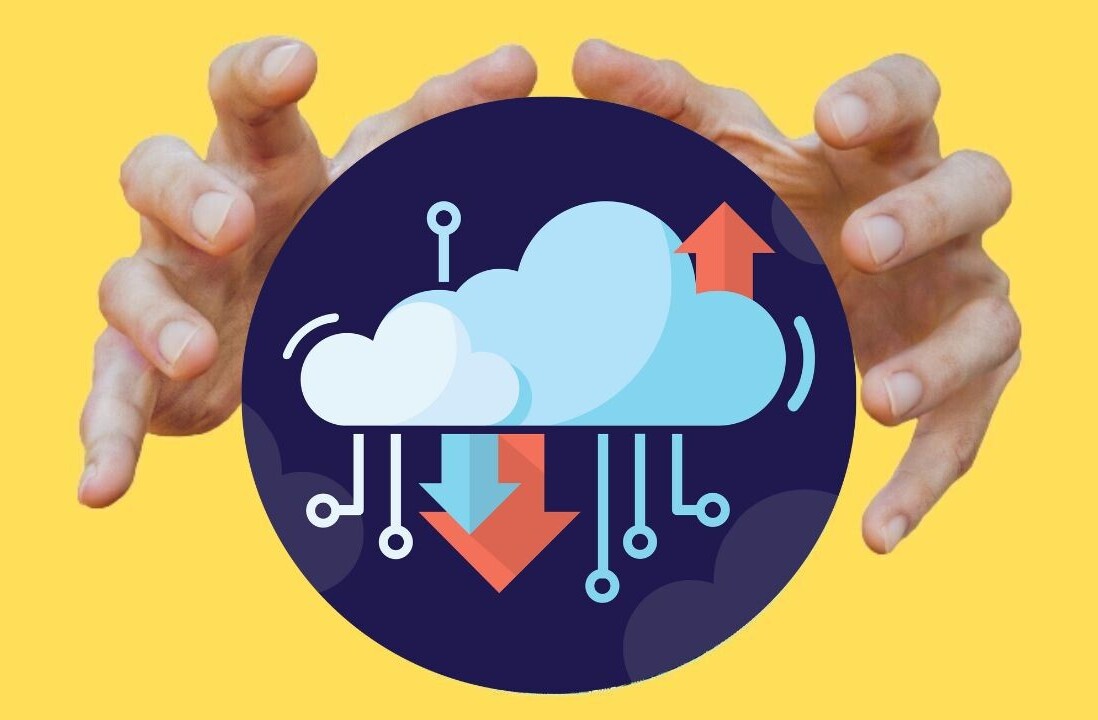
Close your eyes, and cast your mind back to the first dotcom boom in the late 90s/early 00s. What’s your overriding memory of that whole crazy period? Or if you’re too young to really remember, what do you immediately think of when you hear dotcom bubble or dotcom boom mentioned in relation to Silicon Valley at the turn of the millennium?
I’m going to take a stab and guess that it has something to do with over-inflated valuations of ill-conceived, kooky ideas. Okay, that may be wide of the mark for some of the companies that are still plying their trade today, such as Amazon, eBay and Google. And of the many ideas that didn’t work out, not all of them were inherently bad, they were simply ahead of their time.
We’ve discussed this subject before, looking at why the original dotcom boom of a decade ago isn’t the same as today, and why we won’t see the same widespread collapse of the digital industry. In the intermittent years between the two dotcom booms, technologies, attitudes, skill levels…everything, has caught up. So even if companies such as Groupon were to fall flat on their faces tomorrow, the bubble would probably still remain intact, simply because the Internet ecosystem is far more robust – companies rise and fall as they have always done, but e-commerce is here to stay.
One of the reasons why so many companies failed before was that there was a broad lack of understanding about monetizing the Web.
When I interviewed UK investor and entrepreneur Rupert Cook back in July, he reiterated this point, noting that simply having a large number of users in place does not equate to dollar signs, and this has been one of the fundamental lessons learned over the past ten years. It’s not good enough to simply get people using your Web service, for it to be a viable business proposition you need ways to lubricate consumers’ purse strings to make revenue and then, hopefully, a profit.
simply having a large number of users in place does not equate to dollar signs, and this has been one of the fundamental lessons learned over the past ten years. It’s not good enough to simply get people using your Web service, for it to be a viable business proposition you need ways to lubricate consumers’ purse strings to make revenue and then, hopefully, a profit.
There are still echoes of this today, but a key difference is many of the companies are generating revenue, so the general idea is that profits will soon follow, it may just take a bit of time. Whether that actually happens or not remains to be seen in many cases though.
But the point of this piece isn’t so much to dwell on the profitability of dotcom companies. The point is to delve into one of the ways digital enterprises are seeking to monetize their ventures, and whether you’re familiar with the word or not, you will certainly be familiar with the business model: Freemium.
The case for freemium
“Give your service away for free, possibly ad-supported but maybe not, acquire a lot of customers very efficiently through word of mouth, referral networks, organic search marketing, etc, then offer premium priced value added services or an enhanced version of your service to your customer base.”
This was what VC Fred Wilson said in a blog post over five years ago. The post culminated in him asking the public to suggest a name for this business model. “We’ve got words like subscription, ad-supported, license, and ASP, that are well understood”, said Wilson. “Do we have a word for this business model? If so, I don’t know it.” In the comment section, Jarid Lukin from a tech company called Alacra posted this suggestion:
Whilst Lukin is credited with first coining the term, the concept of luring customers in on a basic free service with the hope they’ll ‘upgrade’ at a later point certainly wasn’t new. Think back to the 1980s and 90s, when free versions of computer games were given away with magazines in the hope that gamers would get hooked and invest in the full ‘bells and whistles’ version. And to its credit, it did largely work.
But the Internet has created a generation that expects content for free. From online news sites, through to Napster, on to YouTube and beyond, people have become accustomed to consuming online content for free. And that’s where freemium has really come to the fore.
Freemium is well suited to the Internet generation, it lets those with a desire for a product or service test and enjoy a reduced-feature version before committing hard cash to the cause. And in many cases, they can permanently keep their hands out their pocket and more or less enjoy the same features as the paid version, but tolerate a few adverts instead.
As with any good business model, tiered services are often available too, offering enhanced add-ons over multiple service levels, so consumers can decided what they’re prepared to pay for. Freemium is great, but there are inherent flaws.
Get us addicted, then jack up the price
There’s a funny analogy I always like to cite when discussing the downside of Freemium. There’s an episode of The Simpsons, where Homer is confronted by a little girl selling cookies in a shopping mall. The dialogue runs roughly like this:
Girl: Aloha! Would you like a free cookie sample?
Homer: The price is right! Mmm…oooh…macamadamia nuts!
Girl: If you’d like to buy some, they’re only a dollar each.
Homer [furiously, with cookie crumbs spilling out of his mouth]: Oh, so that’s your little plan. Get us addicted, then jack up the price! Well, you win.
To apply this scenario to the 21st century digital industries, music-streaming service Spotify did a pretty stellar job of shifting the goalposts ever so slightly once it sensed people were addicted. Except it didn’t jack up the price, it merely diminished the free ad-supported element of the service.
Back in April we reported that Spotify was introducing restrictions to its free Spotify Open service that would come into force once a user was registered for six months. The changes essentially meant the free music playback was halved to ten hours each month, and some tracks could only be played a handful of times.
Spotify claimed at the time that the average user wouldn’t notice the difference, but of course many did notice the difference. The whole intention was to shoehorn users into one of the paid services – Spotify Unlimited and Spotify Premium, available for €4.99 and €9.99 per month respectively.
The thing is, with investors to please and the world to conquer, Spotify was never going to become a multibillion dollar behemoth through an ad-supported service. It needed paying members, so it had to get folk sold on the idea first so that they’d be more prepared to pay for it further down the line.
But there are some flaws in operating a freemium business model in this manner. Companies that diminish an ad-supported service which many users were happy with, forcing them into paying for a premium service risk sending their customers fleeing. Granted, in Spotify’s case this might not happen, but the whole point of the set-up initially was that if someone was happy being subjected to advertising or reduced features then they would…if they didn’t like it, then they’d cough up the pretty reasonable £10/€10/$10 per month for the Premium service. Simple.
Spotify might just get away with it, but the more we see these tactics employed elsewhere in the digital realm, the more likely consumers will turn cynical and start viewing it more as souped-up, short-term special promotions as opposed to an actual service level. By reducing the free service, consumer confidence in the brand is weakened.
Looking elsewhere in digital, the App Store has many free games available, with extra ‘paid’ features available to enhance the gaming experience. And Facebook games such as CityVille, FarmVille and Mafia Wars also offer extra features that don’t cost much via in-app micro-transactions, but with millions of players contributing to the pot, it’s a real moneyspinner – everyone’s a winner.
However, as more app and game developers start seeing the pound-sign potential, free services will become increasingly stripped down, making the paid-for premium version the only viable option. For example, a game or an app may call itself ‘free’, but it may only include one level, or you may soon discover that it’s actually pseudo-freemium and only free for a trial period.
This is happening already. EA Games released a mobile version of the (American) football game Madden NFL 11 for free back in  January. The catch was that users could only choose one game: the Indianapolis Colts versus the New Orleans Saints, and it was only available for a short time. Of course, gamers could easily upgrade to the full version for $4.99. It perhaps all just comes down to the choice of words, heck – it’s marketing, but this seemed to lend itself better to calling itself a demo game rather than a free game.
January. The catch was that users could only choose one game: the Indianapolis Colts versus the New Orleans Saints, and it was only available for a short time. Of course, gamers could easily upgrade to the full version for $4.99. It perhaps all just comes down to the choice of words, heck – it’s marketing, but this seemed to lend itself better to calling itself a demo game rather than a free game.
This is something we could start seeing more of in the months and years ahead, as businesses struggle to find ways to get customers hooked on their products and services.
Some people will never convert
As I’ve said already, people are simply too accustomed to consuming content for free, and many businesses will find it tricky converting users from the free version of a service to the paid one. Even in the more successful cases, the non-paying users will typically always outnumber the paying users, the upshot of this being a company is dedicating time, money and resources to supporting users that have absolutely no intention of coughing up cash. This was why Spotify pulled the carpet from under users on its free service, it was to coerce people into paying for what is ultimately a very good service representing good value for money.
In Europe, Spotify has over ten million users, with roughly 10% of these on a paid subscription. Since it launched in the US back in July, the uptake in paid subscriptions has been pretty impressive, with around 1.4m users and 175,000 of those on a paid subscription. But that’s still only a little more than 10% actively paying. The rest are being subsidized by advertising.
Dropbox and Evernote are good examples of a companies that convert free users into paid ones, because their respective services lend themselves to that pretty well. They’re ultimately great products, and by the time you’ve exceeded the limits on the free account, it’s much easier to upgrade to the reasonably priced paid version than up sticks and explore other options. However it’s thought that Evernote, for example, still only converts one fifth of its free customers into paid customers in the first two years, meaning that it’s allocating a lot of resources to people who will never pay.
So what DOES work then?
There isn’t an easy answer to the question of turning a profit with a digital company. With so many apps, tools, software…you name it, flooding the market, ‘free’ is often the most obvious way to gain traction in the first instance. But there’s also a school of thought that says if you charge at least something for a product, people will value it more. But your product genuinely has to be awesome for this approach to work – so you could rely on people getting so tired of the all the free crap out there, that eventually they’ll not mind paying for something useful.
But if you look at the number of highly successful digital companies that barely turn a profit, that’s testament to how hard it can be to make it work on the freemium model. Skype is a colossal company and one of Europe’s biggest digital success stories – it secured 13% of the international call market in 2010, but despite revenues of $860m last year, it made a loss of $7m.
Twitter has over 400m unique visitors a month, 100m active users and 50m users who log-in each day. It barely turns a profit though, and it’s only now, five years after launch, that it’s looking to aggressively drive its revenue stream through promoted tweets and trends across all platforms. Although Twitter doesn’t operate a freemium model, it still helps to demonstrate that a high number of users doesn’t necessarily equate to large profits.
So…freemium sucks then?
This isn’t all about saying freemium is a bad thing – clearly it can and it often does work. But if some of the biggest, game-changing digital companies struggle to make money using that model, how can smaller startups succeed with freemium?
Ultimately, you need a good product that’s worth paying for. The free version shouldn’t be crap, as it is ultimately what reflects on the paid version and is what will tempt people on board, but you have to give customers a reason to make the jump. And ideally, it should be done without pulling the carpet from under the customers whilst they’re enjoying the free version.
Get the TNW newsletter
Get the most important tech news in your inbox each week.








